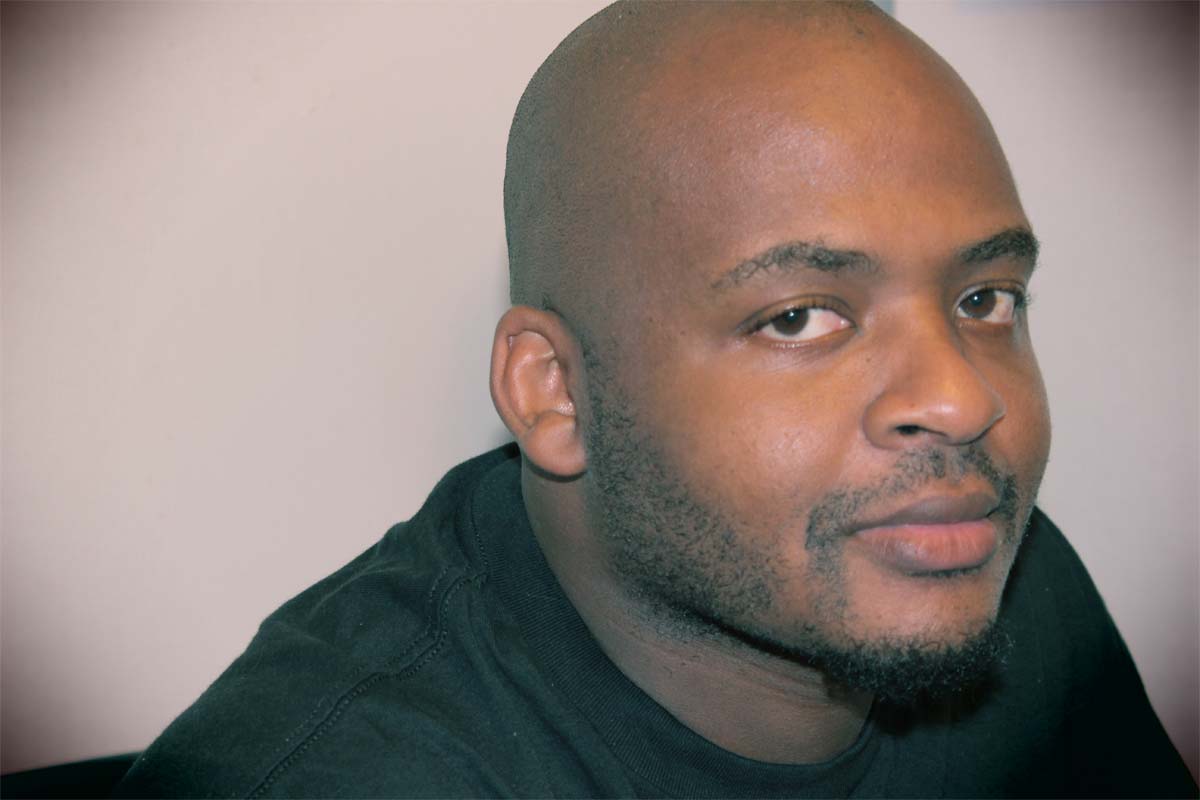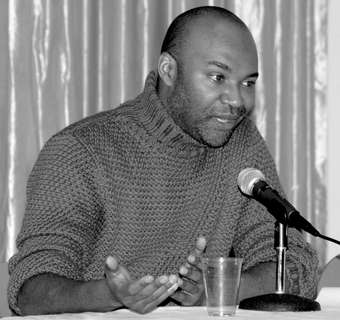(This is the twenty-fourth entry in The Modern Library Nonfiction Challenge, an ambitious project to read and write about the Modern Library Nonfiction books from #100 to #1. There is also The Modern Library Reading Challenge, a fiction-based counterpart to this list. Previous entry: Battle Cry of Freedom.)
 I’ve been a city man all my life. Certainly all of my adult life. At the age of twenty, I escaped from the dour doldrums of suburban Sacramento — the kind of hideous Flintstones-style recurring backdrop that seems to encourage broken dreams, angry tears, and rampant abuse behind model home replica doors — for the bright foggy beauty and the joyful pastels of San Francisco.
I’ve been a city man all my life. Certainly all of my adult life. At the age of twenty, I escaped from the dour doldrums of suburban Sacramento — the kind of hideous Flintstones-style recurring backdrop that seems to encourage broken dreams, angry tears, and rampant abuse behind model home replica doors — for the bright foggy beauty and the joyful pastels of San Francisco.
That gorgeous place from the not so distant past — with the co-op movie theatres playing weirdass indie flicks you couldn’t find on video or teevee, the cafes pattering with political idealism and the streets rattling with the chatty pugnacious jingle of strange conceptual punks, the crumbling encyclopedic bookstores and the boldly strange dive bars of the Tenderloin, and the wonderful mariachi players serenading Valencia Street taquerias for a quick buck, a Mexicoke, and a smile — was exactly the urban realm I needed at the time. Only real souls committed to an increasingly rarefied inclusiveness like Michelle Tea and William T. Vollmann knew how to capture these meat-and-potatoes freak-friendly details in their novels. What I didn’t know, as San Francisco became an unaffordable playground invaded by elitist and not especially perspicacious techbro affluents, was that this coastal metropolis was no longer a place for weirdos like me. I was outpriced and outmatched, like so many who bolted to Oakland, Los Angeles, and elsewhere. It was an all-too-common tale of gentrification and migration, of a city permanently regurgitating its most promising inhabitants and falling victim to an influx of wealth that forever altered its essence. Like any foolish romantic, I fell in love with someone who was absolutely wrong for me and became seduced by the Brooklyn brownstones, the skyscrapers spiring along the rivers, and the giddy pace of a megacity demanding all of its inhabitants to make something of themselves. I’ve been in New York City now for fourteen years — most of my thirties and all of my forties. I hope to continue to live here. But like anything in life, it’s largely the luck of the draw, hoping that the law of averages will work out in your favor. Especially in this age of mass unemployment and pandemic uncertainties and anybody who doesn’t make more than $200,000 a year left in the cold and declared the enemy.
I mention these bona-fides in advance of my thoughts on the great Lewis Mumford to give you a sense of why his amazing book, The City in History, took me much longer to read than I anticipated. The problem with an encyclopedic smartypants like Mumford is that he’ll drop a casual reference that is supremely interesting if you are even remotely curious. One paragraph will send you down an Internet rabbit hole. The next thing you know, you’ve just spent hours of your life trying to find any information on the ancient Greek artisans who hustled their goods in the agora and why slavery was simply accepted as a part of city life for centuries. An email correspondent, learning that I was taking a deep dive into Mumford, urged me to plunge into the four volumes kick-started by Technics and Civilization. And I have to say, given the many months I spent not so much reading The City in History but taking in the many references orbiting its scholarship, I will probably have to wait until perhaps my seventies — should I live that long — for such an enormous undertaking. I could easily see myself as an old bachelor on a beach — filling in crossword puzzles, tendering stories about my misspent youth to any sympathetic ear, respectfully flirting with any lingering divorcé with the decency to not see me as invisible, and carrying along the four Mumford volumes with me (along with whatever will then pass for a tablet to look up all the references) in a satchel.
This is my roundabout way of saying that Lewis Mumford’s The City in History is a wonderfully robust and often grumbly tome from a dude who spent most of his years considering how cities thrive through technological and architectural development. One of the book’s charms is seeing Mumford gradually becoming more pissed off as he gets closer to the modern age. It’s almost as if he resents what the city transformed into in the twentieth century. For example, in a weird aside, Mumford complains about the increased number of windows in residential buildings after the seventeenth century, bemoaning the lack of privacy with a touch of principle rarely remembered by people who grew up with nothing but the Internet’s exhibitionistic cadences. He also has a healthy aversion to the “often disruptive and self-defeating” nature of constant growth. It is, after all, possible for a city or a small town to develop too much. Once cities ditched their walls, there were no longer any physical boundaries to how far any teeming area could spread while arguably become lesser the further it rolled along. (See, for example, the anarchic sprawl of Texas today. Everyone from the likes of the Manhattan Institute’s Michael Hendrix to James Howard Kuntsler has spoken, in varying degrees of horror, about this endless expansion.) On this point, Mumford pushes back against the myth of the medieval town as a place of static boredom. He points to religious edifices somehow transforming these clusters where, for the first time in history, “the majority of the inhabitants of a city were free men.” Even when mercantile centers dried up as trade died, Mumfurod points to the limitless evolution of the countryside. Feudalism subsided for a stabler and more available food supply and new forms of home-spun industry that made many of these smaller villages special. Textile industries flourished in northern Italy and not only resulted in innovations such as the spinning wheel, but some healthy revolutionary pushback against tyrants — such as the weavers rebelling against the ruling elite in 1370-1371. In short, Mumford argues that a reasonably confined city was capable of nearly anything.
But what of the modern metropolis? The cities that called to people like me as a young man? Mumford’s view was that the enormity of a place like Paris or Rome or London or New York City wasn’t merely the result of technological progress. As he argues:
…the metropolitan phase became universal only when the technical means of congestion had become adequate — and their use profitable to those who manufactured or employed them. The modern metropolis is, rather, an outstanding example of a peculiar cultural lag within the realm of technics itself: namely, the continuation by highly advanced technical means of the obsolete forms and ends of a socially retarded civilization.
Well, that doesn’t sound too nice. So the punks who I jammed with in Mission District warrens and the scrappy filmmakers piecing together stories and the bizarre theatre we were putting on while eating ramen and Red Vines were cultural atavists? Gee, thanks, Lewis! Would Mumford apply this same disparaging tone to the CBGB punk crowd and artists who flourished in the East Village and arguably altered the trajectory of popular music? Or, for that matter, the 1990s hip-hop artists who flourished in Bed-Stuy and Compton? This is where Mumford and I part ways. Who are any of us to dictate what constitutes cultural lag? In my experience, obsolete forms tend to square dance with current mediums and that’s usually how the beat rolls on. Small wonder that Jane Jacobs and Mumford would get involved in a philosophical brawl that lasted a good four decades.
It’s frustrating that, for all the right criticism Mumford offers, he can be a bit of a dowdy square. He’s so good at showing us how the office building, as we still know it today, initiated in Florence thanks to Giorgio Vasari. It turns out that this amazing Italian Renaissance man wasn’t just committed to corridors. He designed an interior with an open-floor loggia — those reception areas that can now be found in every damned bureaucratic entity. We now have someone to blame for them! Mumford offers us little details — such as the tendency of early cities to repave streets over the layers of trash that had been thrown over the past twenty years. This resulted in developments such as doorways increasingly becoming lower — often submerged beneath the grade entirely — as history carried on. There are very useful asides in Mumford’s book on the history of multistory buildings. We learn how Roman baths and gymnasiums did make efforts to accommodate the rabble, despite the rampant exploitation of humans. Calvino was only scratching the surface. As long as cities have been around, humans have created new structures and new innovations. For all we know, the Coronavirus pandemic could very well lead to some urban advancement that humankind had hitherto never considered.
Because of all this, I can’t square Mumford’s elitism with the beautiful idealism that he lays down here:
The final mission of the city is to further man’s cautious participation in the cosmic and the historic process. Through its own complex and enduring structure, the city vastly augments man’s ability to interpret these processes and take an active, formative part in them, so that every phase of the drama it stages shall have, to the highest degree possible, the illumination of consciousness, the stamp of purpose, the color of love. That magnification of all the dimensions of life, through emotional communion, rational communication, technological mastery, and, above, all, dramatic representation, has been the supreme office of the city in history. And it remains the chief reason for the city’s continued existence.
Who determines the active and formative development of the city? Do we leave it to anarchy? Do we acknowledge the numerous forces duking it out over who determines the topography? I can certainly get behind Mumford railing against mercantilism. But who establishes the ideal? One of the most underrated volumes contending with such a struggle between social community and the kind of “high-minded” conservative finger-wagging that Mumford too often espouses is Samuel R. Delany’s excellent book, Times Square Red, Times Square Blue, a brilliant portrait of the undeniable “color of love” practiced in the Times Square adult movie theatres through the mid-1990s — until Mayor Giuliani declared war on what he deemed unseemly. In a sidebar, Delany, buttressing Jane Jacobs, observes that the problem here is that this sort of idealism assumes two conditions: (1) that cities are fundamentally repugnant places and that we must therefore hide the poor and the underprivileged and (2) the city is defined by the big and the monumental.
The sheer amount of suffering undergone by the impoverished is something that Mumford, to his credit, does broach — particularly the unsanitary conditions that those in London and New York lived in as these cities expanded. (For more on the working stiffs and those who struggled, especially in New York, I highly recommend Luc Sante’s excellent book Low Life.) But while Mumford is willing to go all in on the question of bigness, he’s a little too detached and diffident on the issue of how the have nots contribute to urban growth, although he does note how “the proletariat had their unpremeditated revenge” on the haves as New York increasingly crammed people like sardines into airless cloisters. And, as such, I found myself pulling out my Jane Jacobs books, rereading passages, and saying, with my best Mortal Kombat announcer voice, “Finish him!”
But maybe I’m being a little too hard on Mumford. The guy wasn’t a fan of architect Leon Battista Alberti’s great rush for suburban development, with this funny aside: “one must ask how much he left for the early twentieth-century architect to invent.” Mumford had it in for Le Corbusier and his tower-centric approach to urban planning (which is perhaps best observed in Chandigarh, India — a place where Le Corbusier was given free reign), but he was also a huge fan of Ebeneezer Howard and his “Garden City” movement, whereby Howard suggested that some combination of city and country represented the best living conditions. Even if you side with Jane Jacobs, as I do, on the whole Garden City question, believing that there can be some real beauty in staggering and urban density, you can’t help but smile at his prickliness:
For the successor of the paleotechnic town has created instruments and conditions potentially far more lethal than those which wiped out so many lives in the town of Donora, Pennsylvania, through a concentration of toxic gases, or that which in December 1952 killed in one week an estimated five thousand extra of London’s inhabitants.
Oh, Mumford! With endearingly bleak observations like this, why couldn’t you be more on the side of the people?



 Correspondent: You write, “In my adult life, I’ve seen that while white institutions could be unthinking, even brutal, toward black aspirations, individual whites, either through genuine friendship or political philosophy, could be crucial allies. So while I never lost sight of racism, it became a huge part of my personal development to take whites as they came, not expecting racism or prejudice from them. And even if it was there, not to overreact, but remember it and exact revenge when I could.” But isn’t revenge along the lines of a kind of negative emotion? Or a negative idea like racism? I mean…
Correspondent: You write, “In my adult life, I’ve seen that while white institutions could be unthinking, even brutal, toward black aspirations, individual whites, either through genuine friendship or political philosophy, could be crucial allies. So while I never lost sight of racism, it became a huge part of my personal development to take whites as they came, not expecting racism or prejudice from them. And even if it was there, not to overreact, but remember it and exact revenge when I could.” But isn’t revenge along the lines of a kind of negative emotion? Or a negative idea like racism? I mean…